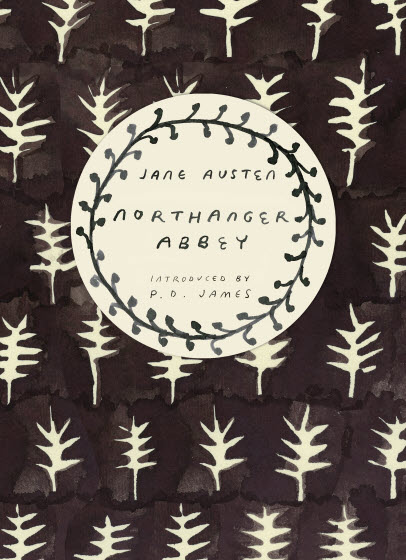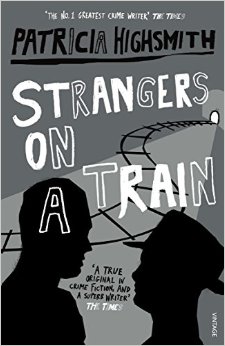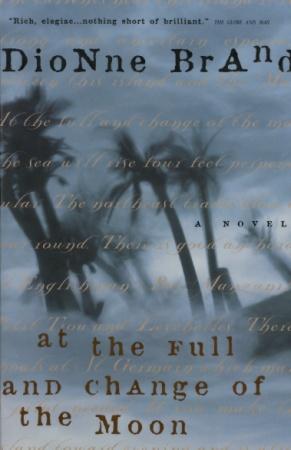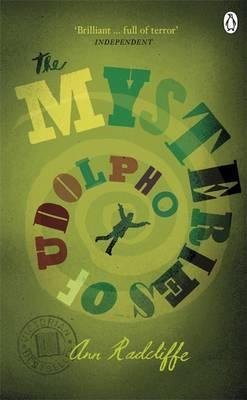Just in time for Halloween, Roomies Alissa McArthur and Rose Morris have put together a list of some of their favourite female gothic writers, both historical and contemporary.
The gothic novel originated in the 18th century with Horace Walpole’s The Castle of Otranto and the genre—characterized by its vivid imagery, mysterious villains, and spooky other-worldliness—has remained popular to this day. Historically regarded as a “feminine” genre due to its popularity among Victorian women, writers have often used gothic tropes to explore transgressive ideas about gender and sexuality. Modern writers have embraced the genre to consider various social and historical issues including colonial violence and traumatic memory.
Just in time for Halloween, Roomies Alissa McArthur and Rose Morris have put together a list of some of their favourite female gothic writers, both historical and contemporary.
Ann Radcliffe

Ann Radcliffe’s The Mysteries of Udolpho is probably most famous for being the novel that inspired Jane Austen’s wonderful gothic parody, Northanger Abbey. However, Udolpho should also be appreciated in its own right. Published in the 1790s, this is the novel that popularized the genre and made the word “gothic” a household term. The novel revolves around protagonist Emily’s trials and tribulations after the death of her parents, which include a journey through the picturesque landscapes of Europe, a forbidden love affair, an oblivious aunt, a blood-thirsty uncle, and a stint in a haunted castle. Emily struggles through understanding grief, fear, and love as she transitions from a child to an adult.
This is the kind of novel you can get absolutely lost in. Radcliffe’s vivid descriptions make you feel like you are travelling the French countryside alongside Emily, and later like you are locked in a haunted dungeon with her. The artful blend of terror and beauty in this novel has had an incredible impact on gothic writers since, and is a must-read for gothic junkies and Austen fans alike.
—Rose
Jane Austen
 Jane Austen’s Northanger Abbey (1817) is a brilliant study in the gothic. A pastiche of the gothic genre—particularly parodying Radcliffe’s The Mysteries of Udolpho—this novel both makes fun of the gothic and celebrates it. Northanger Abbey follows a young woman’s experience visiting the city for the first time and her journey of self-discovery. The heroine, Catherine Morland, is an avid reader of the gothic and finds herself imagining eerie plots all around her, to the point where, when visiting the family of her paramour, she begins to believe that she is being held captive by a grisly murderer!
Jane Austen’s Northanger Abbey (1817) is a brilliant study in the gothic. A pastiche of the gothic genre—particularly parodying Radcliffe’s The Mysteries of Udolpho—this novel both makes fun of the gothic and celebrates it. Northanger Abbey follows a young woman’s experience visiting the city for the first time and her journey of self-discovery. The heroine, Catherine Morland, is an avid reader of the gothic and finds herself imagining eerie plots all around her, to the point where, when visiting the family of her paramour, she begins to believe that she is being held captive by a grisly murderer!
The thing I love so much about Northanger Abbey is that it playfully makes fun of the gothic novel while at the same time using the genre to create a truly gripping story. I’m also enamoured by the fact that the heroine is intentionally unremarkable. Catherine is particularly plain in looks, and she is not especially wealthy nor is she a poor outcast. She is simply a regular teenage girl, who occasionally gets caught up in her own fantasies. And then there’s Henry Tilney. Henry’s witty banter and agreeable nature gives him a very realistic feel, and makes him my personal favourite Austen gentleman (yes, I’d even pick him over Darcy!).
—Rose
Emily Brontë

The Brontë sisters, Charlotte, Emily and Anne, all wrote memorable novels that are still widely read. Many would argue Charlotte’s Jane Eyre is the best of the Brontës. But it’s the middle sister, Emily, who holds a special place in my heart for her outrageous and utterly bizarre gothic masterpiece Wuthering Heights (1847). Just a year after her only novel was published, Emily died of tuberculosis at age 30, leaving behind one of the strangest and most enduring novels in the English language.
Yes, Wuthering Heights is over-the-top. There’s little Victorian propriety to be found in Brontë’s novel. It’s packed with open cruelty and abuse, deception, flagrant sexuality, racism, religious hypocrisy, class mobility, grave digging, madness, illness, and yes, a ghost. Heathcliff and Catherine’s intense relationship is as abusive and dysfunctional as it is romantic—and it’s completely enthralling. But instead of stretching their love story over the whole novel, Brontë abruptly cuts it off and takes things in an even weirder direction. In the second half, Brontë introduces a second generation of characters that play out a strange and muted echo of their parents’ doomed love lives. Wuthering Heights flouts conventions in the best way, and it’s unlike any other novel I’ve read. Many filmmakers have tried to capture the eeriness of Wuthering Heights, but maybe it’s best expressed through interpretive dance.
—Alissa
Patricia Highsmith
 My personal favourite neo-gothic novel has got to be Patricia Highsmith’s Strangers on a Train (1950). When two strangers, Guy Haines and Charles Bruno, meet by chance on a train and have a conversation about the people in their lives they could do without—Haines’s estranged wife and Bruno’s father. The men discuss the concept of the “perfect murder,” wherein Haines would murder Bruno’s father and Bruno would murder Haines’s wife, thus leaving the police baffled since neither murderer would have a traceable connection to their victim. One of the men takes this conversation to be nothing but hypothetical fancy, while the other takes it rather more seriously. Before you know it, the two men are deeply entrenched in a cycle of murder, blackmail, and madness. The delicious evilness of Bruno’s character coupled with his Freudian obsessions and his odd relatability makes him my favourite gothic villain, and, although the novel is set in 1940s New York, Highsmith manages to evoke the gothic setting in a way that feels modern, fresh, and oh-so-creepy.
My personal favourite neo-gothic novel has got to be Patricia Highsmith’s Strangers on a Train (1950). When two strangers, Guy Haines and Charles Bruno, meet by chance on a train and have a conversation about the people in their lives they could do without—Haines’s estranged wife and Bruno’s father. The men discuss the concept of the “perfect murder,” wherein Haines would murder Bruno’s father and Bruno would murder Haines’s wife, thus leaving the police baffled since neither murderer would have a traceable connection to their victim. One of the men takes this conversation to be nothing but hypothetical fancy, while the other takes it rather more seriously. Before you know it, the two men are deeply entrenched in a cycle of murder, blackmail, and madness. The delicious evilness of Bruno’s character coupled with his Freudian obsessions and his odd relatability makes him my favourite gothic villain, and, although the novel is set in 1940s New York, Highsmith manages to evoke the gothic setting in a way that feels modern, fresh, and oh-so-creepy.
—Rose
Dionne Brand

Canadian novelist, poet, and critic Dionne Brand has often turned to the gothic to explore issues of memory and trauma related to colonialism, racism, gender, and sexuality. As literary scholar Cynthia Sugars studies in her book Canadian Gothic, racialized writers such as Brand have used gothic writing to interrogate Canadian and colonial history: “the ghosts of Canada’s past, and the Gothic literary tradition itself, are themselves haunted, and sometimes trumped, by unacknowledged spectres that persist into the present.”
In her 1999 novel At the Full and Change of the Moon, Brand explores the reverberating aftereffects of slavery and colonialism through the transmission of traumatic memory. The novel begins with a Trinidadian slave named Marie Ursule, who orchestrates a slave revolt through mass suicide, but not before sending her daughter Bola away with the child’s father. Marie Ursule casts a spell that will scatter Bola and her many descendants around the world and into the future, far away from slavery in Trinidad. Yet Bola’s progeny are continually haunted by the past—in memories, dreams, and by ghosts. Brand uses a looping, non-chronological narrative structure that underscores the way the past never leaves us. As Bola tells her children, “‘Life will continue, … no matter what it seems, and even after that someone will remember you. And even after that it could be just the whiff or thought of things you loved.” The characters haunted me, too—by the time I finished reading, I felt deeply entwined in the lives of Marie Ursule’s family. Densely lyrical and deeply affecting, this multigenerational epic explores haunting as a way of acknowledging and remembering historical violence.
—Alissa














